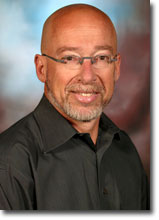Microsoft Big Brains: Anders Vinberg

Just before retiring from day-to-day responsibilities at Microsoft in 2008, Chairman Bill Gates said that he expected Microsoft's 22 Technical Fellows to get a lot more publicly visible -- now that they wouldn't be living in his shadow. While some of the Microsoft fellows already have been active on the public-speaking circuit, many of them are not widely known outside the company.
Last year I launched this series -- "Microsoft Big Brains" -- to help remedy that shortcoming. In the coming weeks, I am hoping to profile as many of the company's tech fellows as to whom I can get access. Slowly but surely, I'm making my way through the list.
Microsoft's Technical Fellows came to the company via a variety of different routes. Some of them run divisions inside the company; some focus on particularly thorny technical issues that may span a variety of product units. Regardless of where they sit in the organization, the fellows all have been charged with helping Microsoft craft its next-gen products and strategies, much the way that Gates used his regular "Think Weeks" to prioritize what Microsoft needed to do next.

Microsoft's systems management business has undergone a somewhat quiet transformation in the past few years. (I'd say it's been quiet more because the press and analysts spend inordinate amounts of time and energy watching every little twist and turn inside Windows, than because Microsoft has tried to keep the changes hidden.) Technical Fellow Anders Vinberg has been there and helped nudge things along -- first, by creating new projects, and later, by getting teams to take ownership of them (with Vinberg acting as a consultant).
Prior to joining Microsoft, Vinberg was in despair about the state of the systems management industry, he admitted.
"We still didn't know much about the systems we were managing," he said.
But after a call from Microsoft, which was looking for a way to help unhappy customers handle management nightmares cause by Blaster, Slammer and other security woes, Vinberg decided he was ready to jump back into the fray. He was, at first, rather idealistic.
"I believed I could achieve my dream here. The goal was making life easier for the IT guy," Vinberg, a native of Sweden, recalled.
But reality hit quickly. Seven years ago, "a lot of the (systems management team) was immature about management. Visions in this space are cheap. This needs to be about delivering products," said Vinberg, who these days reports directly to Corporate Vice President of Microsoft's Management and Services unit Brad Anderson.
Just getting the System Center team to a "stable" position was a major achievement, he said. Now, applications are being built with a model-based approach. But technology is constantly changing. Virtualization became a big focus for Microsoft and its competitors. Vinberg began contemplating questions like, "What would be the secondary considerations of virtualization and what would that mean for IT?" The old assumptions about how products and technologies could be changed on the fly in datacenters came into question. These kinds of questions and new thinking led to the focus on product suites -- and, in particular, system-management suites -- at the company.
His thinking coalesced to the point that three years ago, Vinberg ended up writing a ThinkWeek paper on the topic of virtualization and its impact on IT.
"What if we only did virtual-machine-based deployments? What would that mean for deployment, reliability and the like while managing existing infrastructures?" Vinberg asked. The paper touched on everything from "model-based management," to automation through workflow (like what's being done with PowerShell), he said.
Vinberg hasn't been focusing exclusively on virtualization and datacenter topics, however. The implications of managing mobile clients are also top of mind for him, he said, along with thorny questions like how to provide compliance policies when everyone is running on a device. Given that focus, it's not surprising Vinberg has been talking to the Windows 8 team about the new management capabilities that the company is looking to bake into the next version of Windows client.
With Windows, "management is not an after-thought, on the side," Vinberg said. There will be some interesting new advances to Windows Update -- including a significant one that is timed to release at the same time Windows 8 comes out, he said. (He wouldn't offer dates or more details; that's all he'd say."
(It's interesting to note that System Center Online Desktop Manager, due out next year, is built on top of the Windows Update underpinnings, as is Microsoft Security Essentials, Microsoft's free anti-malware/anti-virus product, according to Vinberg.)
Vinberg also is spending a lot of cycles at present on Microsoft's evolving private-cloud strategy and vision. As one would expect, he is talking extensively to the Azure team about how to provide the kinds of infrastructural advances available to customers of Microsoft's hosted solutions to users who want to host their own data on-premises. Currently, there isn't really an equivalent to System Center built into Windows Azure. Meanwhile, applications aren't standing still. Next-generation applications that customers may want to run in a public or private cloud "will have different qualities than existing apps," Vinberg said.
"Programmers used to be an elite group of developers," Vinberg reminisced. "Then Visual Basic arrived. In the cloud, we need the moral equivalent of Visual Basic to take this technology into the mainstream."
For all of the “Microsoft Big Brains” profiles, check outthe Big Brains page.